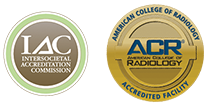Written By: Stacy Simon
A harsh truth about lung cancer is that it doesn’t usually cause symptoms until the cancer is already advanced and not able to be cured. That’s why the idea of screening – looking for lung cancer in people who do not have any symptoms – is appealing. It has the potential of finding the cancer earlier, when it’s easier to treat.
But screening carries risks that may outweigh the benefits for most people. The people who are most likely to benefit from screening are those at higher risk for lung cancer, such as people with a long history of smoking.
How lung screening works
A computed tomography (CT or CAT) scan uses x-rays to produce detailed cross-sectional images of the lungs. It’s better than a regular x-ray at finding lung tumors and showing them clearly. That’s why CT scans are used for lung cancer screening.
One drawback of a CT scan is that it finds a lot of abnormalities that turn out not to be cancer but that still need to be checked out to be sure. This may lead to additional scans or even more-invasive tests such as needle biopsies or even surgery to remove a portion of lung in some people. A small number of people who do not have cancer or have very early stage cancer have died from these tests. There is also a risk that comes with increased exposure to radiation, even though a low dose is used for lung screening.
To weigh the benefits and risks before issuing current guidelines, experts at the American Cancer Society reviewed several studies that looked at low-dose CT screening. The most significant was the National Lung Screening Trial (NLST). This study included more than 50,000 people aged 55 to 74 who were current or former smokers with at least a 30 pack-year history of smoking (equal to smoking a pack a day for 30 years, or 2 packs a day for 15 years) and who had not quit more than 15 years ago. The NLST found that people who got low-dose CT had a 20% lower chance of dying from lung cancer than those who got chest x-rays. However, some other trials have not found a benefit from screening.
The screening in the NLST was done at large teaching hospitals with access to a lot of medical specialists and comprehensive follow-up care. Most were National Cancer Institute cancer centers.
High-risk patients should consider getting screened
Because of the risks associated with low-dose CT scanning, and the possibility of doing more harm than good for people who are less likely to have lung cancer, the American Cancer Society recommends doctors discuss screening with people who are at high risk for developing the disease and help them make an informed decision about whether to get screened. If people do decide to get screened, they should get screened every year through age 74, as long as they are still healthy.
To be in the high-risk category, patients must be aged 55 to 74 years and have a smoking history equivalent to a pack a day for 30 years, and currently smoke or have quit within the past 15 years. To be a good candidate for screening, patients need to be in fairly good health. For example, they need to be able to have surgery and other treatments if lung cancer is found.
Read More @ American Cancer Society
















